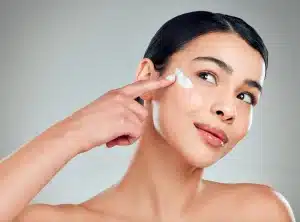
The Ultimate Guide to Sunscreen: How to Choose and Use It Effectively
Understanding Sunscreen: What It Is and How It Works
Sunscreen is a critical component of skincare, designed to protect our skin from the harmful effects of ultraviolet (UV) radiation. UV radiation from the sun is classified into UVA and UVB rays. UVA rays penetrate deep into the skin, leading to premature aging and wrinkles, while UVB rays cause sunburn and play a key role in the development of skin cancer. A broad-spectrum sunscreen protects against both types of rays, making it essential for comprehensive skin protection.
Types of Sunscreen: Chemical vs. Physical
When choosing a sunscreen, it’s important to understand the difference between chemical and physical sunscreens.
Chemical Sunscreens
Chemical sunscreens absorb UV radiation and convert it into heat, which is then released from the skin. Common ingredients in chemical sunscreens include oxybenzone, avobenzone, and octinoxate. These sunscreens are often preferred for daily use due to their lightweight and non-greasy formulas. However, they may cause irritation for sensitive skin types.
Physical Sunscreens
Physical sunscreens, also known as mineral sunscreens, contain zinc oxide or titanium dioxide. These ingredients sit on top of the skin and reflect UV rays away. Physical sunscreens are often recommended for those with sensitive skin or concerns about chemical ingredients. They tend to be thicker and may leave a white cast on the skin, but advancements in formulations are minimizing this issue.
Choosing the Right SPF
Sun Protection Factor (SPF) is a measure of how well a sunscreen protects against UVB rays. Here’s a quick guide to choosing the right SPF:
- SPF 15: Blocks approximately 93% of UVB rays. Suitable for everyday activities with minimal sun exposure.
- SPF 30: Blocks about 97% of UVB rays. Recommended for extended outdoor activities.
- SPF 50: Blocks around 98% of UVB rays. Ideal for very fair skin or intense sun exposure.
It’s crucial to note that no sunscreen can block 100% of UV rays, and higher SPF values provide diminishing returns.
Water Resistance and Reapplication
Water resistance is another important factor, especially for activities involving water or sweat. Sunscreens labeled “water-resistant” must maintain their SPF for 40 minutes of water exposure, while “very water-resistant” sunscreens last for 80 minutes.
Regardless of the water resistance, it’s vital to reapply sunscreen every two hours, or immediately after swimming, sweating, or towel drying. Reapplication ensures continuous protection throughout the day.
Applying Sunscreen Correctly
Proper application of sunscreen is key to effective sun protection. Follow these steps for optimal coverage:
- Quantity: Use about one ounce (a shot glass full) to cover the entire body. For the face, a nickel-sized amount is sufficient.
- Timing: Apply sunscreen 15-30 minutes before sun exposure to allow it to bind properly to the skin.
- Coverage: Ensure even application on all exposed areas, including often-missed spots like the ears, back of the neck, and tops of the feet.
- Layering: Apply sunscreen as the last step in your skincare routine, but before makeup.
Special Considerations
Sunscreen for Different Skin Types
- Sensitive Skin: Opt for physical sunscreens with soothing ingredients like zinc oxide.
- Oily Skin: Choose oil-free, non-comedogenic formulas to prevent breakouts.
- Dry Skin: Look for sunscreens with hydrating ingredients such as hyaluronic acid or glycerin.
Sunscreen for Children and Babies
Children’s skin is more sensitive and requires special attention. Use physical sunscreens with gentle ingredients for babies over six months old. For younger infants, it’s best to avoid direct sun exposure and use protective clothing.
Sunscreen for Outdoor Activities
For sports or beach activities, choose a water-resistant, broad-spectrum sunscreen with an SPF of 30 or higher. Reapply frequently and use additional protective measures like hats, sunglasses, and UPF clothing.
Common Myths About Sunscreen
Myth 1: You Don’t Need Sunscreen on Cloudy Days
Up to 80% of UV rays can penetrate clouds, making sunscreen necessary even on overcast days.
Myth 2: Dark Skin Doesn’t Need Sunscreen
While darker skin has more melanin, which provides some protection against UV rays, it is not immune to sun damage and can still suffer from hyperpigmentation and skin cancer.
Myth 3: Sunscreen Causes Vitamin D Deficiency
Using sunscreen does not significantly affect vitamin D production. You can maintain healthy levels through diet and supplements if needed.
Conclusion: Make Sunscreen a Daily Habit
Incorporating sunscreen into your daily routine is the most effective way to protect your skin from the harmful effects of UV radiation. By choosing the right sunscreen for your skin type and activities, applying it correctly, and reapplying as needed, you can significantly reduce the risk of sunburn, premature aging, and skin cancer.